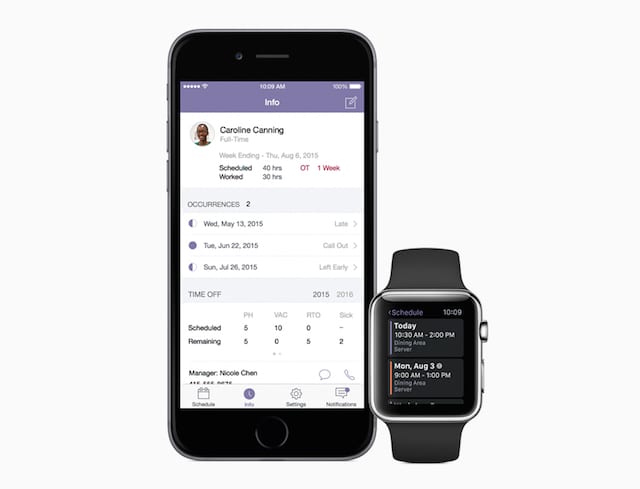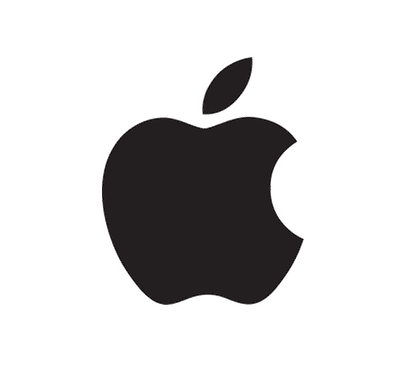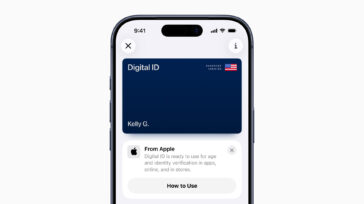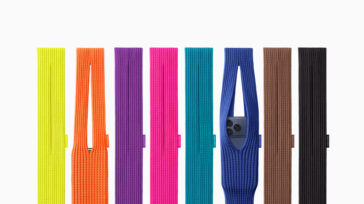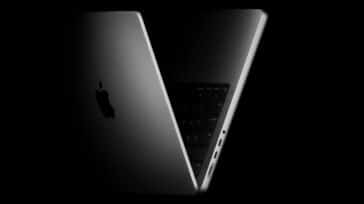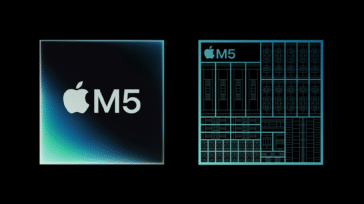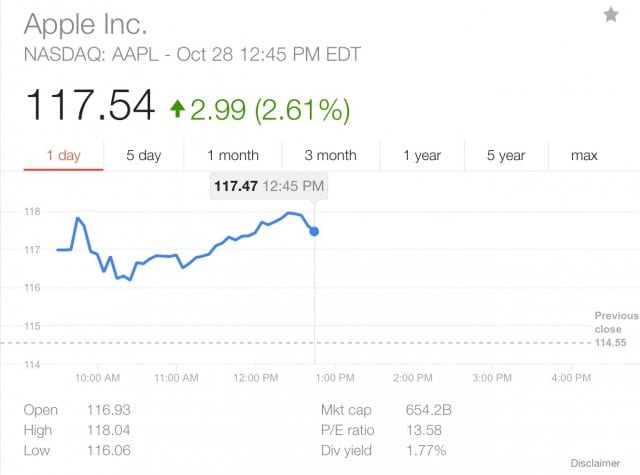
Yesterday’s fourth fiscal quarter earnings report from Apple surprised many… in a good way. Once again, the company produced record results for the quarter ending Sept. 30, 2015:
- Revenues: $51.5 billion
- Profit: $11.1 billion ($1.96 per diluted share)
- Gross Margin: 39.9 percent
- iPhone: 48 million units
- iPad: 9.8 million units
- Mac: 5.7 million units
iPhone sales were up 36 percent over the year-ago quarter, largely due to the somewhat early introduction of the iPhone 6s and 6s Plus during the quarter. Demand remains strong enough that supply can’t keep up, and Apple CEO Tim Cook and CFO Luca Maestri both reiterated that one of the biggest sources of demand is from Android smartphone users switching to the iOS platform.
Although the executives didn’t reveal numbers, both were ecstatic about new Apple products including Apple Pay, Apple Music, and Apple News. Not only is Apple Pay experiencing double-digit growth in transactions each month, but the company announced that it is partnering with American Express to bring Apple Pay to cardholders in Australia, Canada, Spain, Singapore and Hong Kong. Australia and Canada will see Apple Pay on American Express this year, while the other three countries are to be added in early 2016.
Apple Music is now available in 100 countries with China coming soon. The company boasts 6.5 million paying subscribers so far, and about 15 million total users. Apple News has 45 million readers so far, and 70 major publishers now use the News Format to create engaging content, with many more to come.
It certainly appears that at 31 years of age, the Mac is finally coming into its own. The quarter saw record sales of Macs, continuing a trend that has seen increasing sales 34 out of the past 35 quarters. One of the major enterprise success stories comes out of Apple partner IBM, which now has 30,000 Macs installed and is adding 1,900 more every month.
According to Maestri, “Each Mac is saving IBM US $270 compared to a traditional PC thanks to reduced support cost and higher residual value.”
Traditionally, Wall Street responds to Apple earnings call by selling shares and causing a swift drop in share price. Yesterday was an oddity, probably thanks to Apple’s cautious but optimistic guidance for the important holiday quarter. Wall Street reacted happily, with AAPL performing well today — share prices hit as high as $118 in early trading this morning, up almost 3%.
Apple’s performance in the Chinese market appears to be the source of some of the upbeat outlook, since iPhones are still selling briskly despite a recent devaluation of the yuan.
Analyst Gene Munster of Piper Jaffray felt that Apple’s guidance for the current quarter was a “relief,” as many analysts expected foreign currency pressure to hold down international earnings forecasts. Piper Jaffray raised its price target on AAPL to $179 per share.
Two other firms, Wells Fargo and Cowen & Company, were a bit more cautious in their after-call forecasts. Both companies are showing share price targets in the $125 to $130 range. UBS analyst Steven Milunovich loved the news from Maestri and Cook that many Android smartphone users are switching to iPhone and that thanks to the Apple iPhone Upgrade Program, the company expects iPhone upgrade cycles to shorten. UBS gives AAPL a “buy” rating and a share price target of $150.
FBR & Co. analysts Daniel Ives felt that the earnings news for the past quarter was “a major step in turning the positive tide around the Apple Story.” The fact that Apple is still expecting year-over-year growth for the holiday quarter impressed Ives, who thinks that there’s room for continued growth in iPhone sales. FBR maintained an “outperform” rating with a $175 share price target.
Finally, here’s a problem a lot of us would love to have: Apple can’t get rid of its cash fast enough. Even with an agressive stock buyback program in place, the company ended the last quarter with $205.7 billion in banks around the world. That makes Apple the first company in history to break the $200 billion cash on hand mark. The company could theoretically purchase both GM ($54.4 billion market cap) and Ford ($59.3 billion) to bolster its Apple car plans, and still have plenty of cash on hand.
Of course, there are still doomsayers who feel that the company is about to take a tumble from its lofty heights. Warwick Business School associate professor Aleksi Aaltonen thinks that the company isn’t being innovative enough. Aaltinen, who used to be a digital designer at fallen cell phone manufacturer Nokia, says that “The longer the current product portfolio carries the success without any major new innovations, the bigger the risk that the company stagnates like former mobile market leader Nokia and, in some respects, Microsoft.”
Apple certainly has enough money to put all of its efforts into research that can keep new and exciting products coming out of its labs for the forseeable future.

